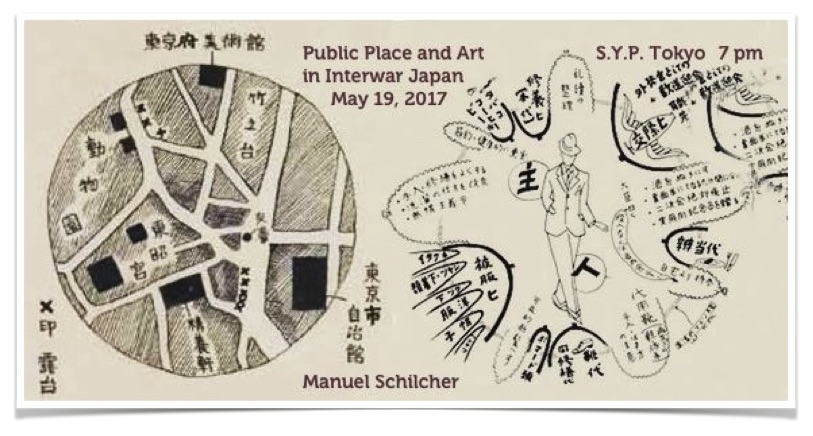Lecture about the Production of Place and Public Art in Interwar Japan and its Western Influence.
Since the sixteenth century onward different methods of public display were established in Japan. Until the transformation of the Western concept of museum, objects were presented in the temporary unveiling of sacred icons called kaichō, the educational displays of Dutch science objects and texts called bussankai and the spectacles and curio shows called misemono. Mostly located around temples and shrines this venues were outside of governmental restrictions and control, motivated to create a form of public space distinct from the state, floating between religion, commerce, sex and entertainment. With the raise of department stores in the early twentieth century misemono moved from the street into the show windows of the stores. Those were decorated with realistically created mannequins iki-ningyō and three dimensional decoration objects uridashi gaitō sōshoku, following Germans Bauhaus design plastics, to generate more attention and revenue for customers. In their commercial success of promoting art, department stores became an early part of modern exhibition practise as those institutions changed also the presentation technique of framed paintings at their art sections.
The lecture traces the structural shifts in the expansion of the city of Tokyo in the first decades of the 20th century and examines changing ideas of urban space and the human body through an investigation of various strategies of representation of the modern metropolis. Comparing the German Bauhaus and Russian Constructivism with the Japanese proletarian art forms, the speech will focus on the first urban Avant-garde sculptures and performances which were brought to the streets in Tokyo after the Kanto Earthquake in 1923. I will present a variety of texts concerned with the fragmentary qualities of modern urban life, including sociological studies by the urban ethnographer Kon Wajirô (1881-1973), critical writings on department stores, excerpts from schemas of urban planning under the tenure of Tokyo mayor Gotô Shinpei (1867- 1929) and artistic statements and projects by Murayama Tomoyoshi (1901-1977). In an historical overview on the conception of presenting art, the lecture will discuss intercultural differences in the embodiment of public space as an art form.







